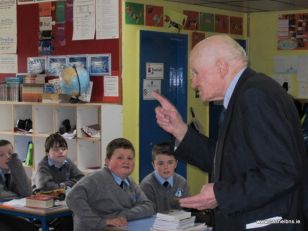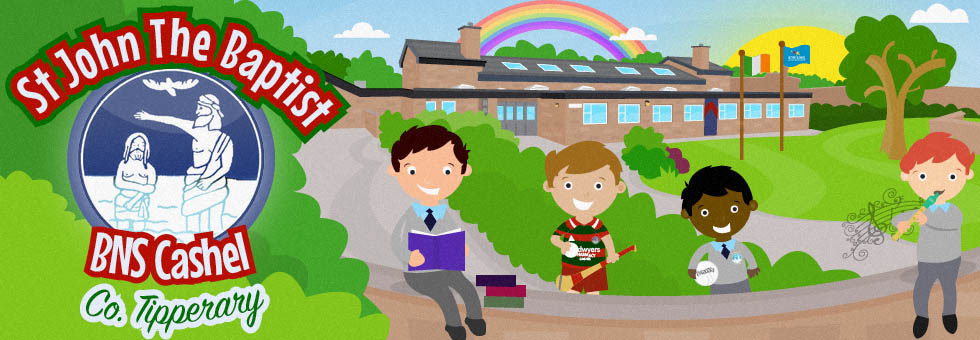THE EMERGENCY IN IRELAND

by Daniel Moloney and Tomás Burke On Thursday, 29th November Mr Knightly came in to speak to 5th class about what it was like in Ireland and Tipperary during World War II. It was known as the Emergency. Mr Knightly used to be the principal of St John the Baptist BNS. He started off by telling us about how Ireland exported a lot of cattle “on the hoof” to Britain. There were big boats to transport cattle to Britian. England was only interested in the war effort, Ireland was neutral. There was no coal imported into Ireland. We had to use turf. Thousands of men worked in the bogs. Turf was transported by rail, trains worked 24hours a day to transport the turf, however it wasn’t as good as coal. Turf even came up from Cahirsiveen. Mr Knightly told us how the turf was even kept in the hall of the school. When an inspector came, the teacher at the time told him that if the boys didn’t work with the turf, there would be no heating and therefore no school. Ireland was very poor; we had a very small army. The soldiers had to train with big, heavy old rifles. There were about four buses in Tipperary. Transport at the time was mainly by bicycle or by walking. There was only about 4 buses in Tipperary at the time. Fuel for transport was very scarce. Only the local priest would have had a car, maybe a principal teacher. Mr Knightly felt very strongly that mothers at the time didn’t get enough credit for all the work they did. For example, they were at home baking bread and preparing the dinners and they didn’t have any ovens, so they had to use pot ovens which would hang over the fire and they were constantly sewing clothes and mending clothes. There were no flushing toilets at the time, no washing machines and no hot water, Ireland was under developed. There was lots of food planted. About 90% of mothers were at home working and 10% of mothers were out working. Everyone’s garden was planted with vegetables, for example carrots, peas and potatoes. Children at the time played games like snakes and ladders, draughts, ludo, marbles and skittles which they would play a lot. Onto the films at the time, all they had was silent black and white films, up until the end of the war. An average farmer has enough space for 10 cattle, they were aiming only to keep their families alive, it wasn’t really for the money. England was most interested in buying meat off Ireland. After a while people were stopped from making white bread as white flour was scarce so they made brown bread. There were four factories to make sugar in Ireland; they were in Thurles, Carlow, Mallow and Tuam. Irish merchant ships were painted green, white and orange so that they would be easily recognised from the air and not fired upon although England painted their boats blue to camouflage with the waves so that they would not be seen by the Germans. Britian supplied Ireland with oil and petrol to keep are country going during the war. [nggallery id=31]
St John the Baptist Boys National School,
Old Road, Cashel, County Tipperary, Ireland
T: +353 62 61833
E (Office) : reception@cashelprimaryschools.ie
E (Principal) : principal@cashelbns.ie



